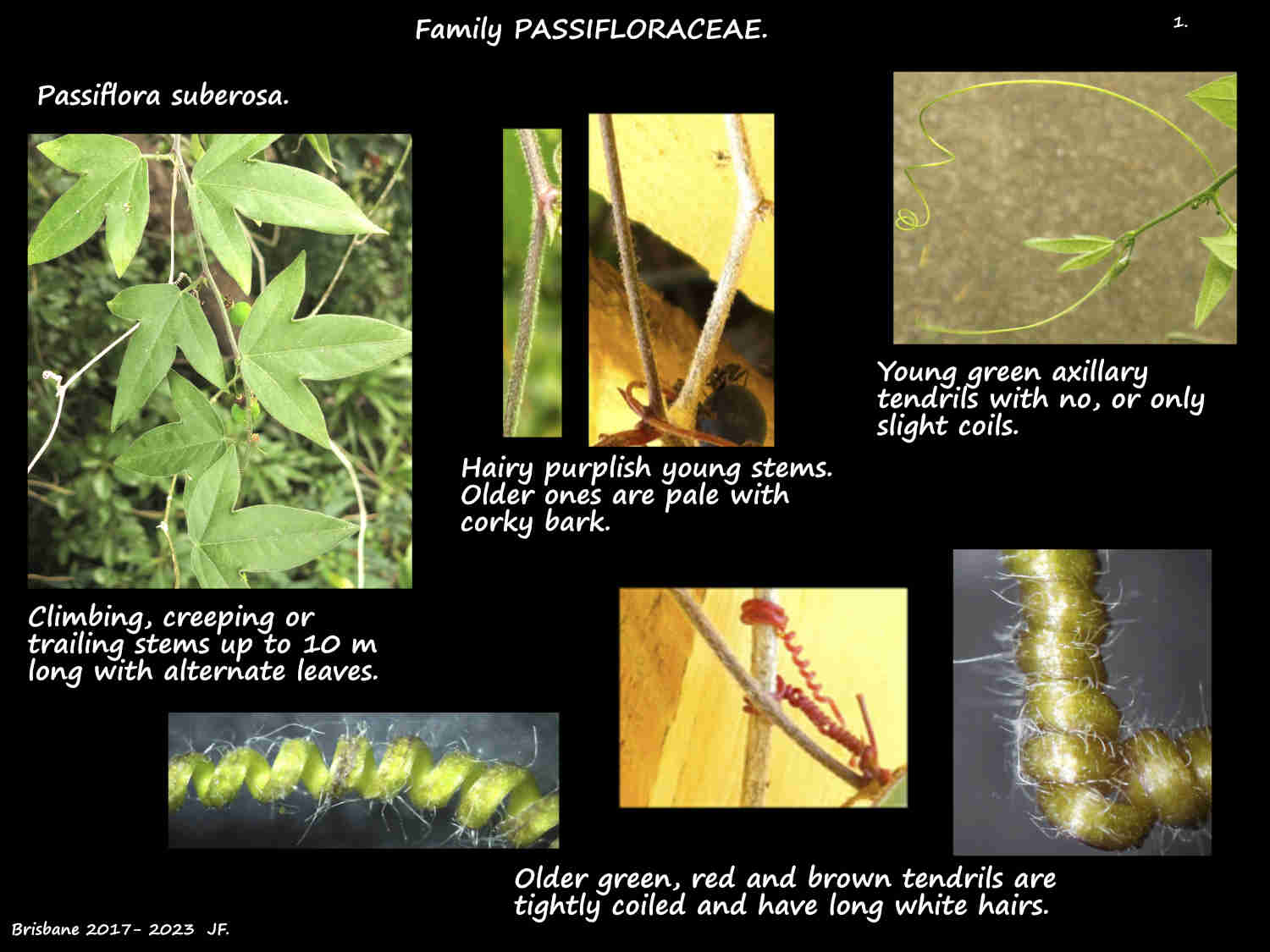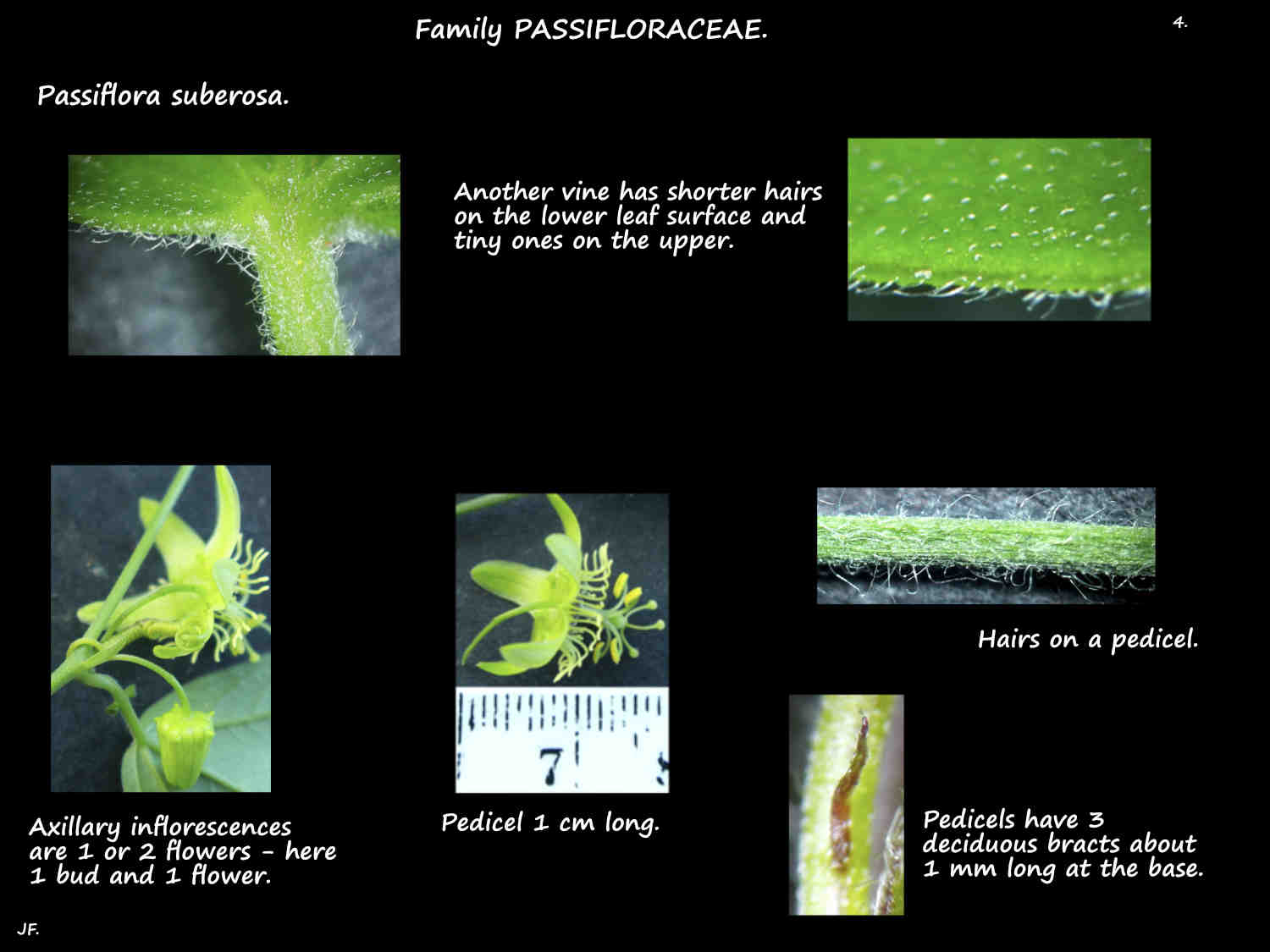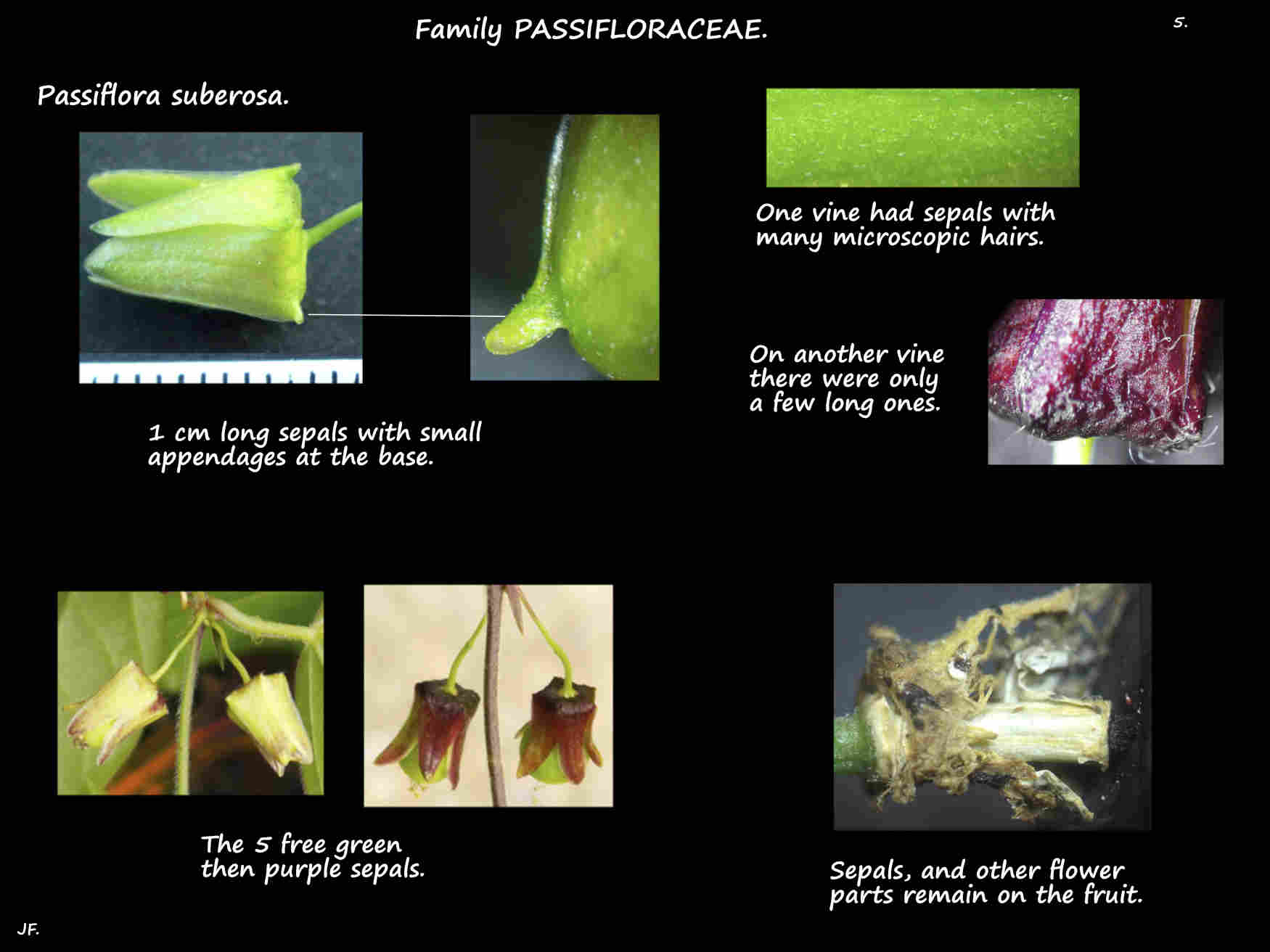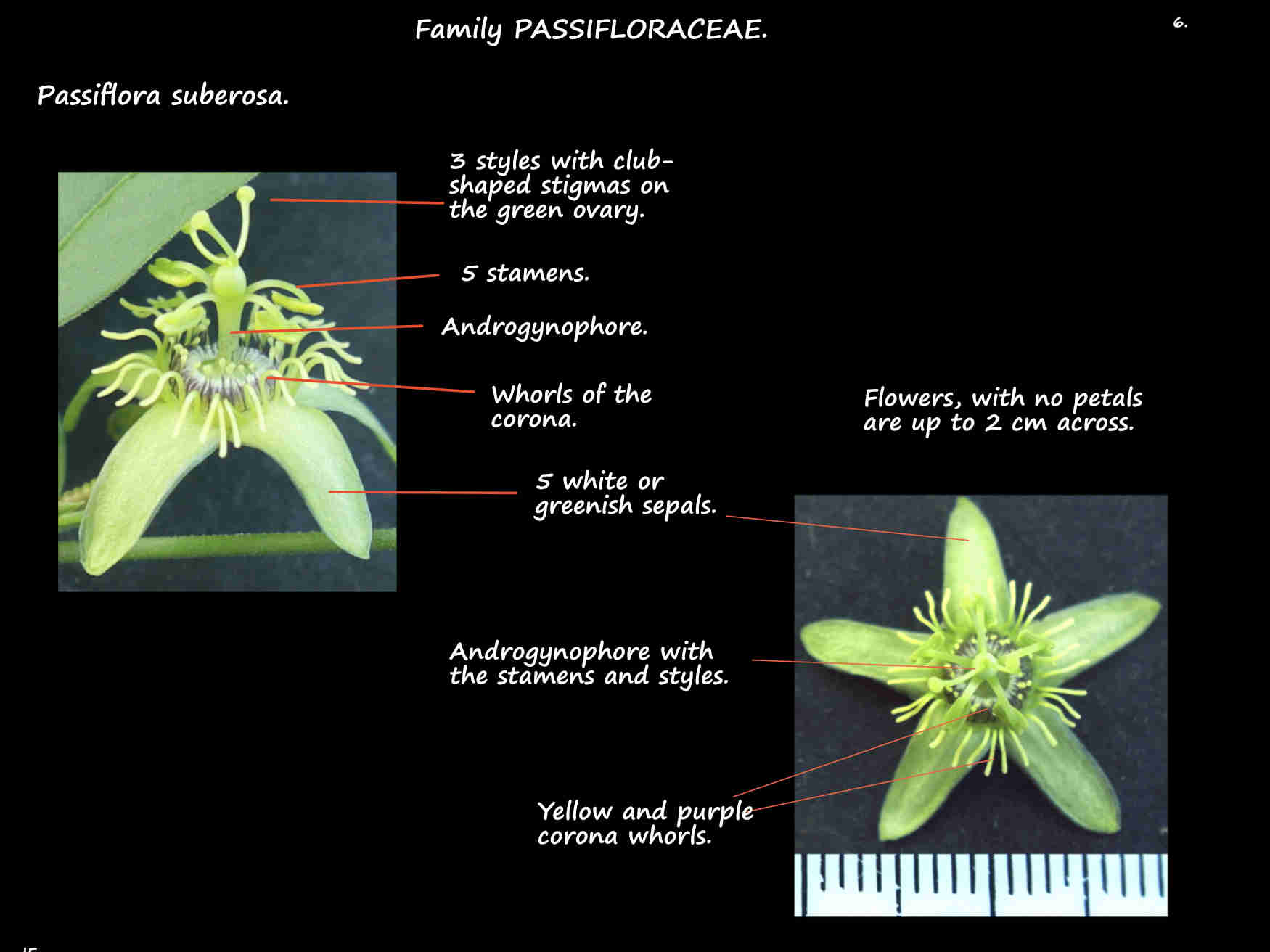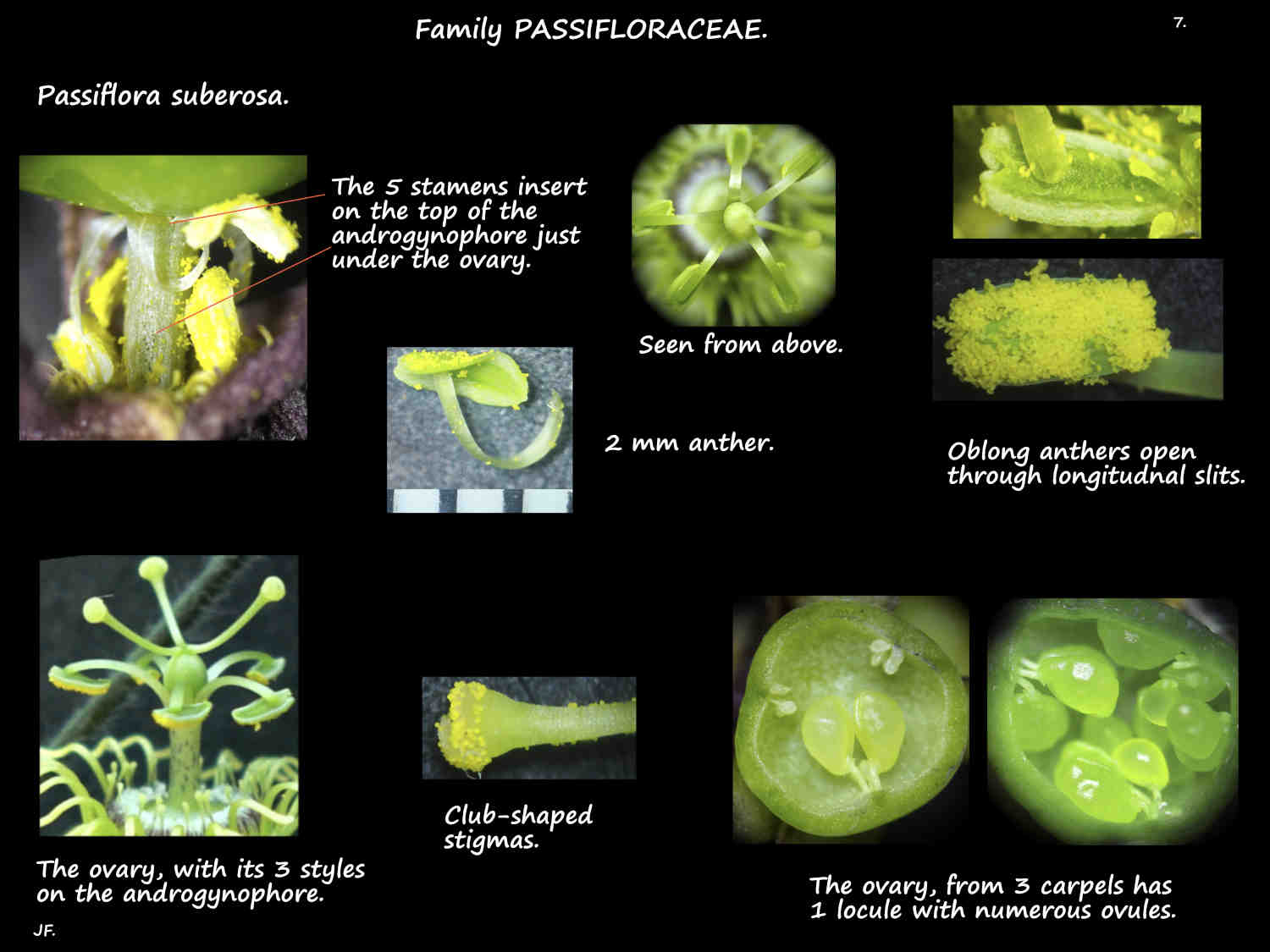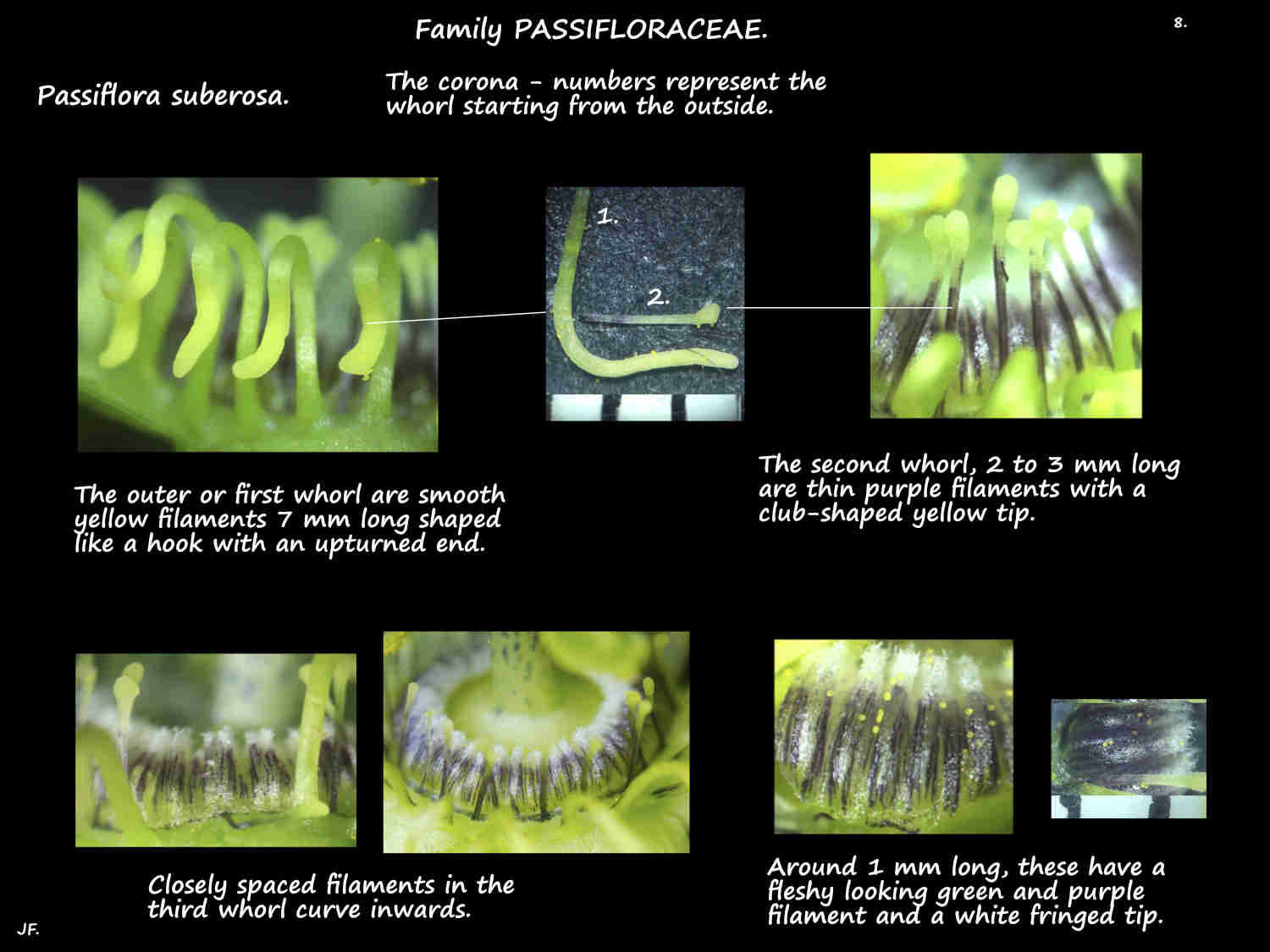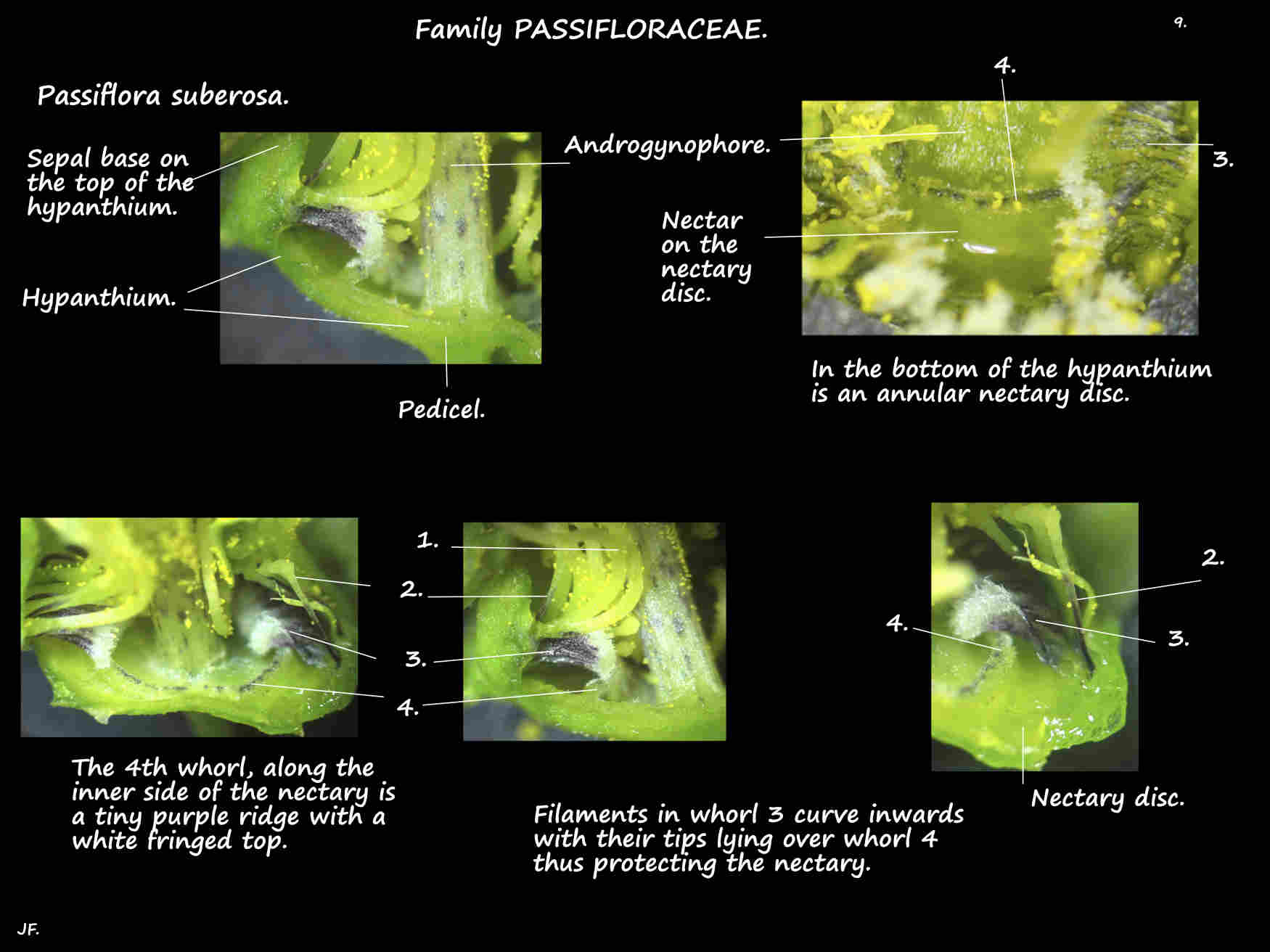Passiflora suberosa.
The Wild, Corky, Pointed leaf or Small passionfruit is in Family Passifloraceae.
Naturalised in S.E. Queensland it is a weed due to its ability to completely cover other vegetation,
root where it touches the ground and produce a lot of seeds.
It can grow as a climber or creeper with stems up to 6 (10) m long.
Young purplish stems can be smooth to very hairy while old stems develop pale corky bark.
The alternately arranged leaves are on hairy stalks or petioles up to 4 cm long.
The small, hairy linear stipules at the base of the petiole are under 1 cm long.
There are 2 green obconical (inverted cone) nectary glands at or above the middle of the petiole.
The leaves are very variable even on one plant.
Leaf blades can be simple but most have 3 (2) lobes with pointed tips.
The unlobed (entire) elliptical, ovate to lanceolate blades are up to around 12 cm long.
The lobed blades are smaller at around 8 cm long.
The leaf bases are round or heart-shaped.
Hairs are variable from none to sparse or dense on both surfaces.
The simple unbranched axillary tendrils, with a few hairs become tightly coiled.
Axillary inflorescences are a solitary flower or a pair.
The slightly hairy flower stalks or pedicels are up to around 1.5 cm long.
At the base of the pedicels are 3 bracts around 1 mm long that fall off.
Flowers, up to 2 cm across have no petals.
The 5 free white to greenish lanceolate sepals, under 1 cm long have a few hairs.
The hypanthium, only 1 mm or so high holds the sepals and the corona.
The 5 stamens and the ovary are on a stalk or androgynophore around 4 mm long.
The stamens have flat filaments 2 to 3 mm long with oblong anthers around 2 mm long.
Above the stamens is the 2 mm high smooth green ovary.
Of 3 fused carpels it has a single locule with numerous ovules having parietal placentation.
There are 3 curved styles with club-shaped stigmas.
The first whorl of the corona is inserted on the rim of the hypanthium just inside the bases of the sepals.
Up to 7 mm long the smooth yellowish filaments, initially erect curve out and down forming a hook.
Just inside these are the 3 mm long filaments of the second whorl.
These are thin erect filaments with a purple base and a pale yellowish upper section with a knob-like end.
Inside these is the third whorl of filaments around 1 mm long that curve inwards.
Close together they are purple with a white fringed top.
At the bottom of the hypanthium, around the base of the androgynophore is an annular nectary disc.
The nectary disc or annulus is protected by 2 structures.
The first is the third whorl which curves inwards over the nectary to end above the 4th whorl.
The 4th whorl, along the inner side of the nectary is a minute purplish ridge with a white fringed top.
The fruit are smooth round berries up to 1.5 cm across.
Ripening from green to a bluish or purplish-black they have numerous flattened seeds about 3 mm long.
J.F.

